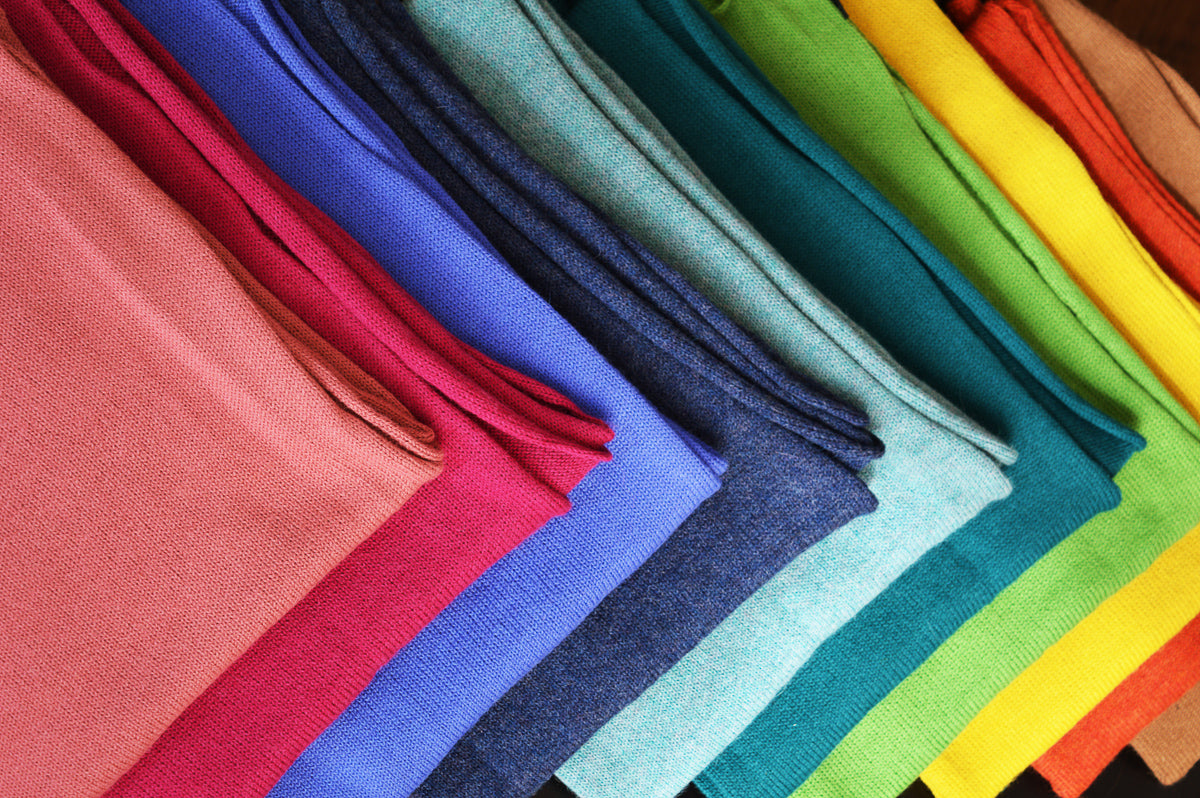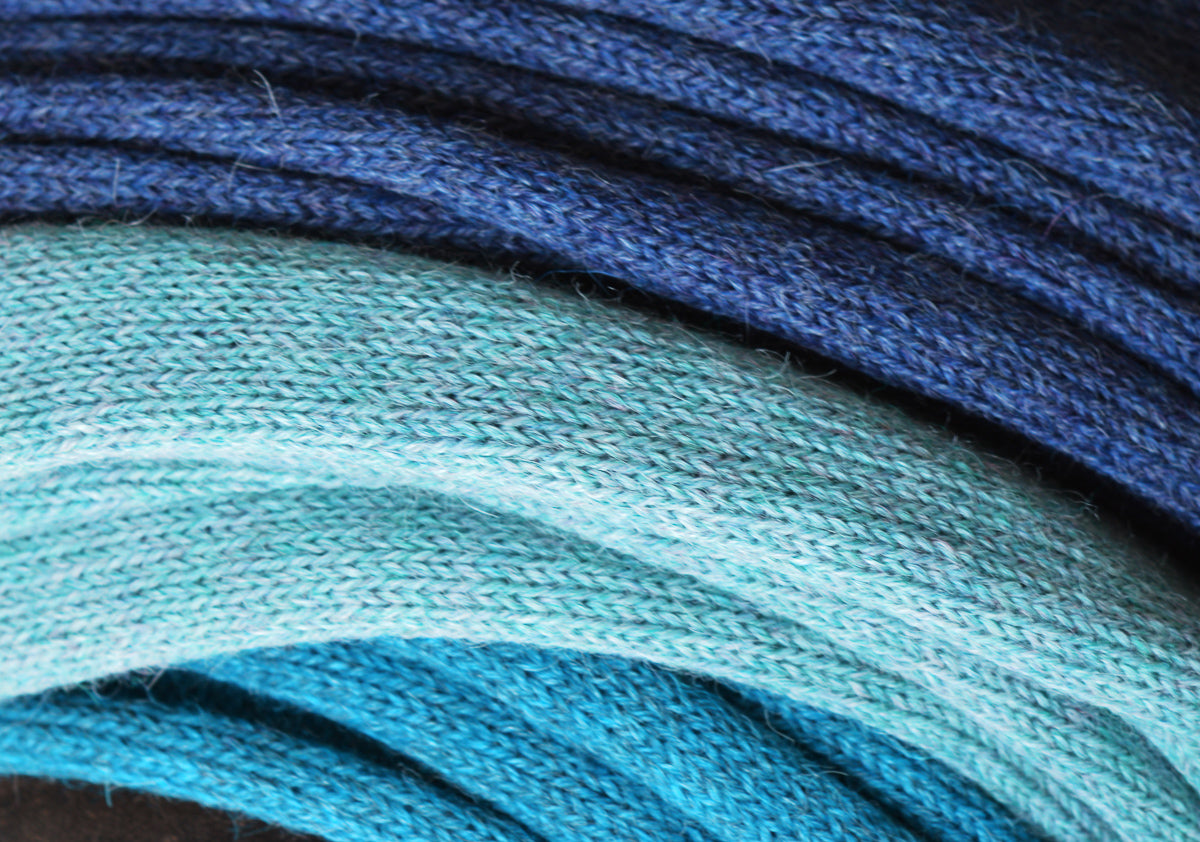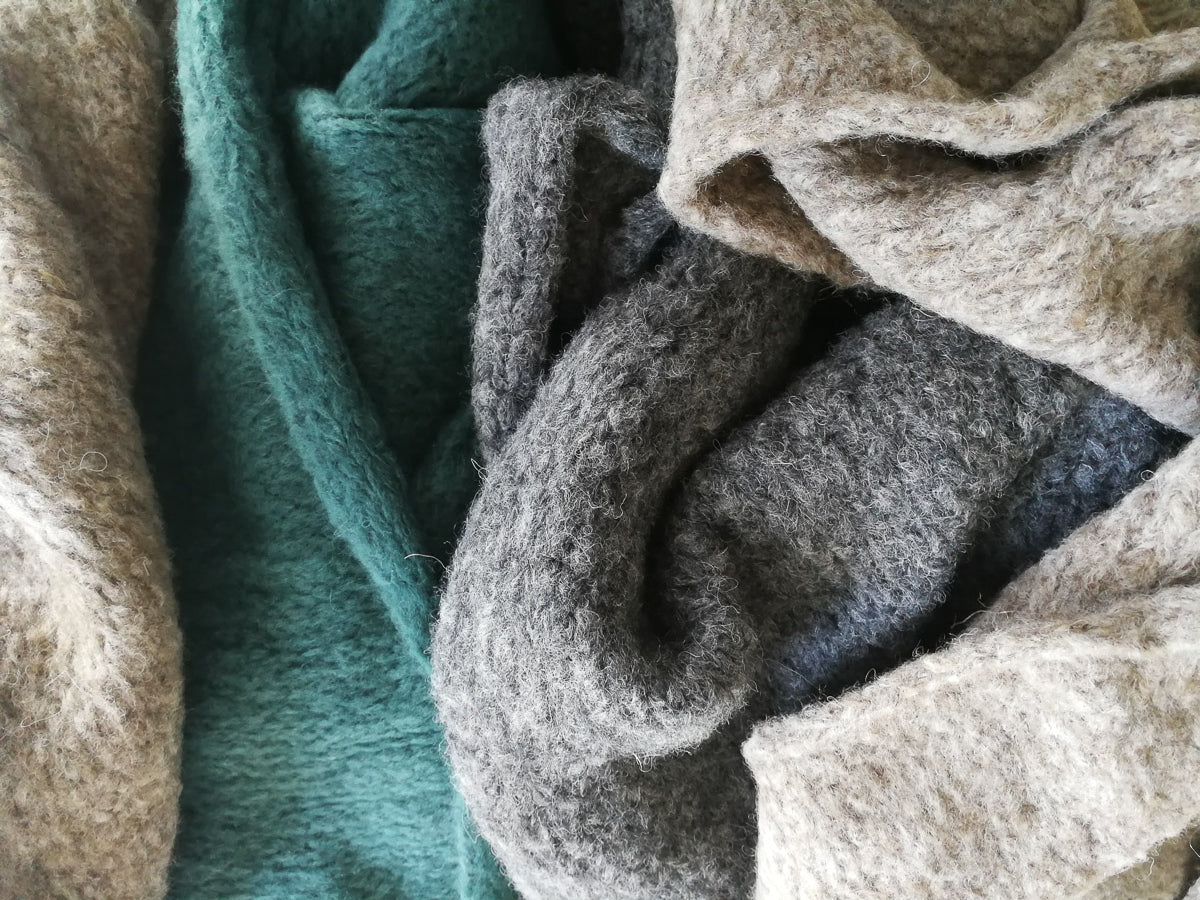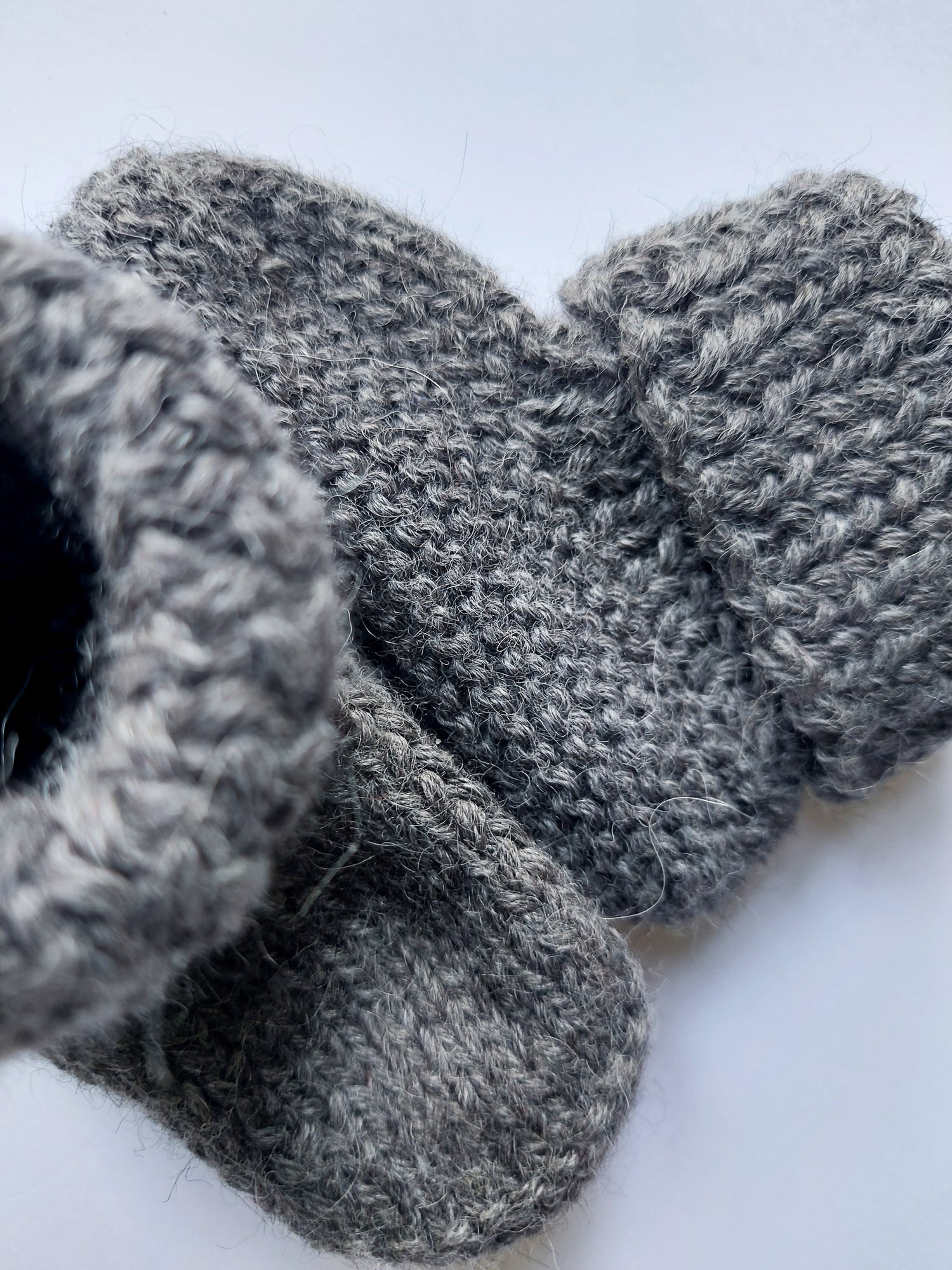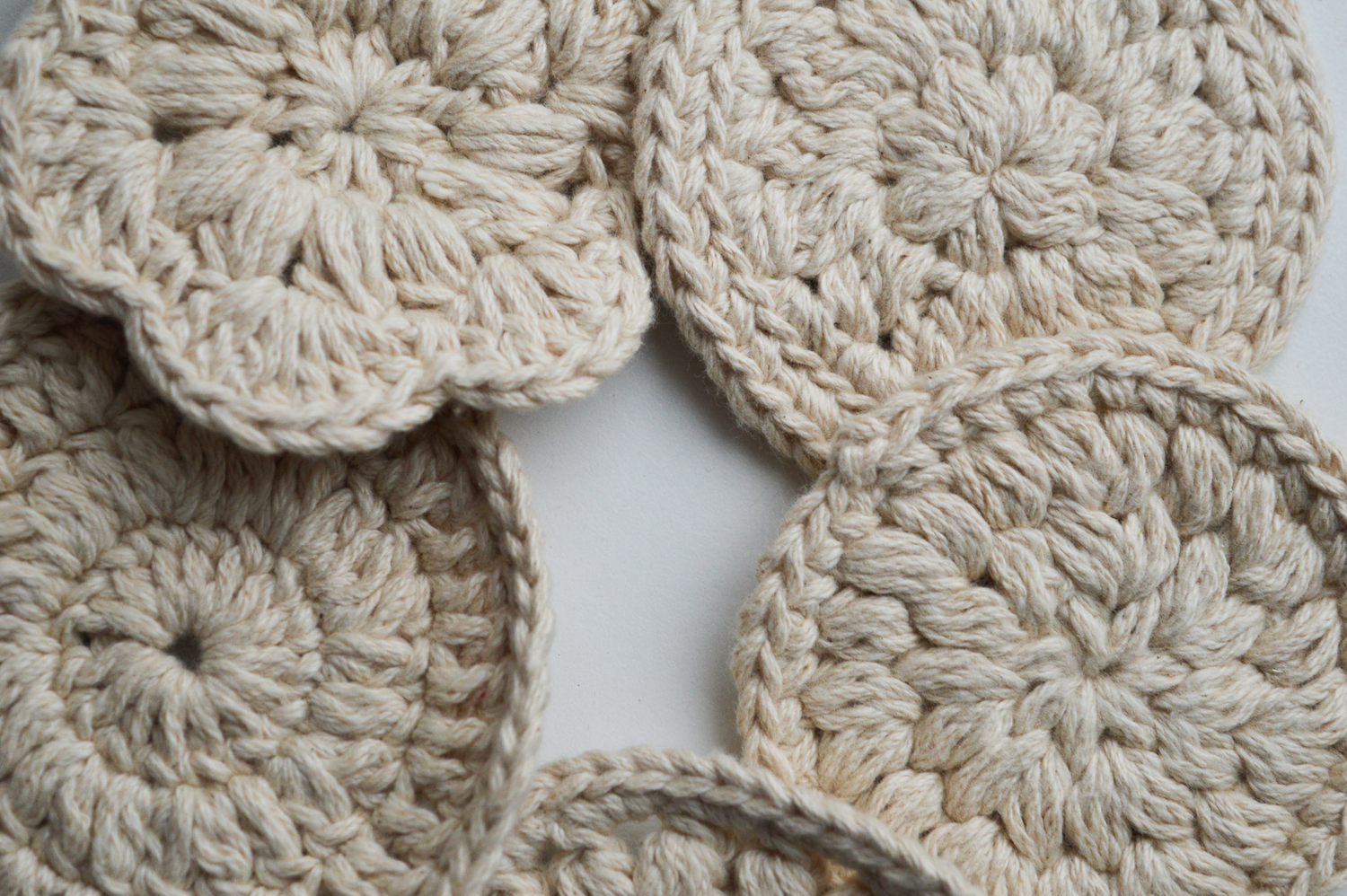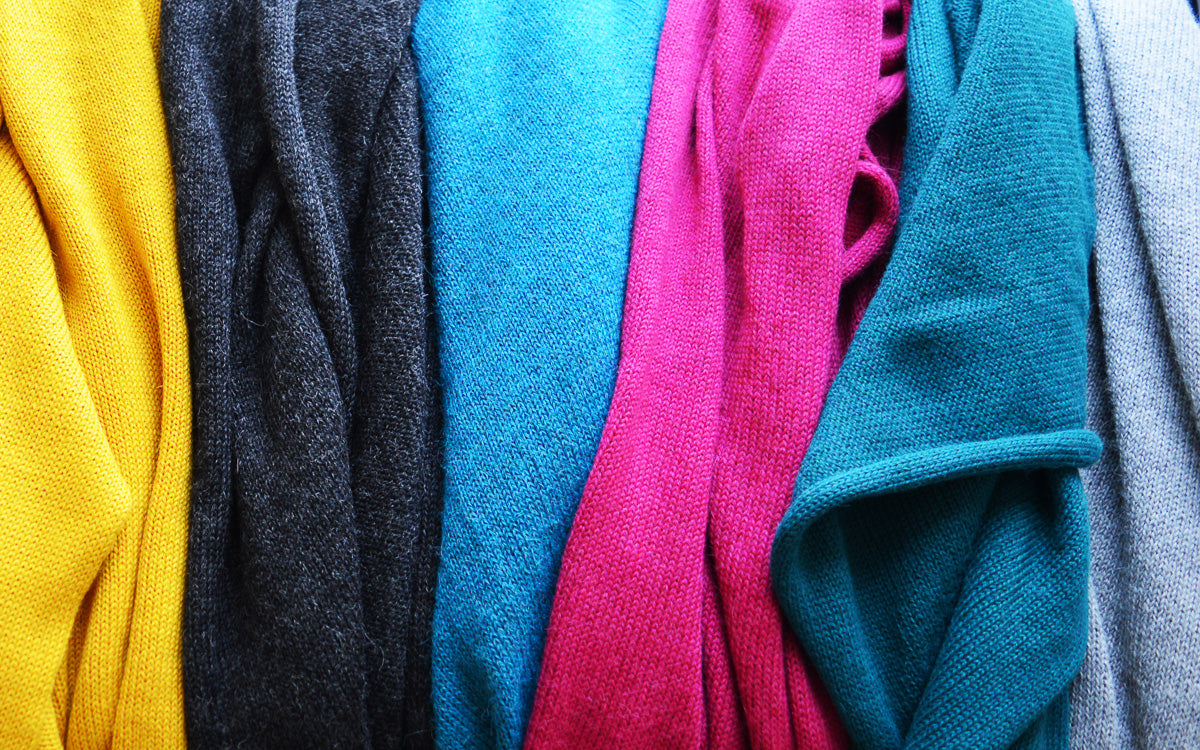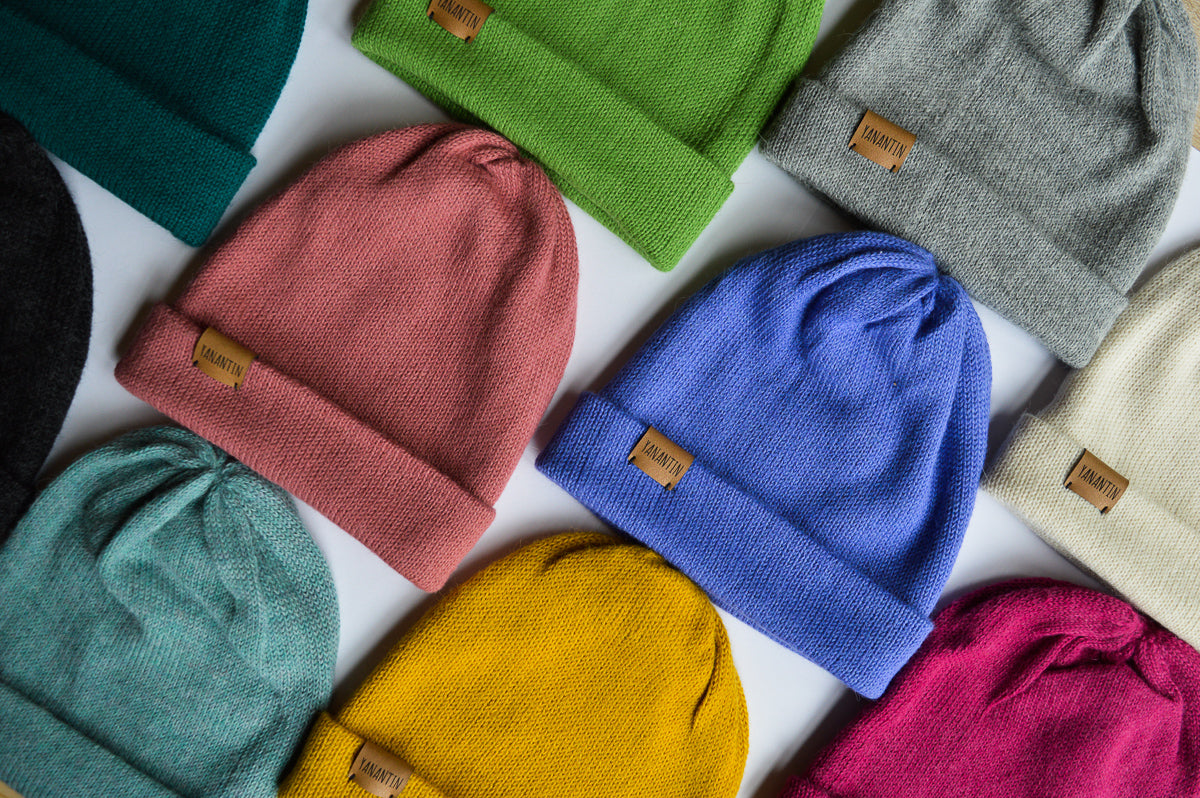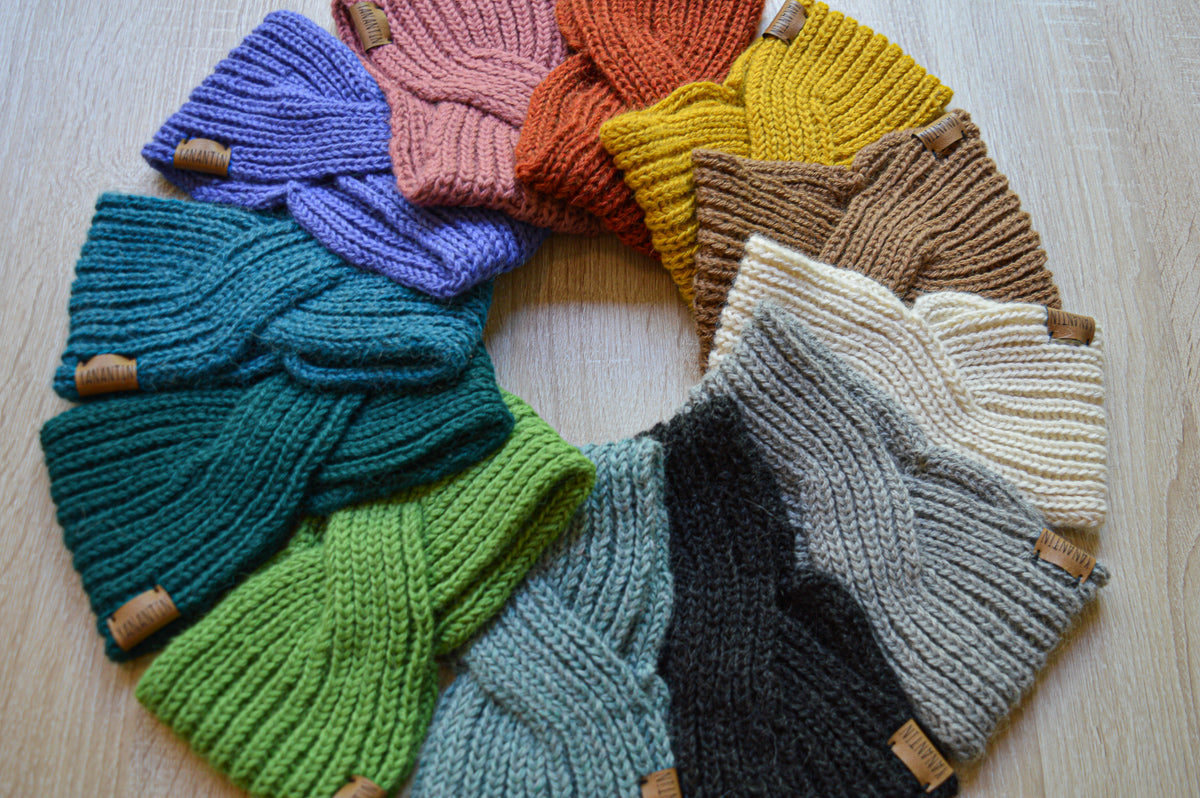I clearly remember feeling alpaca wool for the first time. The moment I touched it, I knew it: this is a special fiber! If you’re curious about alpaca wool, you're probably wondering: how does alpaca wool feel?
Alpaca wool feels soft, smooth, and cool to the touch, offering lightweight warmth thanks to hollow fibers. It’s breathable, elastic, and mostly itch-free, making it comfortable for sensitive skin. Unlike traditional wool, alpaca provides a luxurious, hypoallergenic feel ideal for various uses.
Let’s break it down into three key aspects: Texture & Feel, Weight & Movement, and Skin Sensitivity.
Texture & Feel
Alpaca wool is a premium fiber, so when you’re buying or about to wear alpaca wool, you’re going to want to know what it’s going to feel like on your skin. Alpaca wool is not just another wool fiber, it’s texture and feel are exactly what makes it stand apart from other fibers.
Alpaca Wool Feels Cold (At First!)
When you first touch alpaca wool, you’ll notice that it feels cold. Not freezing cold, but definitely cooler than most other fabrics. It’s one of the easiest ways to identify alpaca wool—that cool-to-the-touch sensation stands out.
-
You can find more tips and tricks on how to recognize real alpaca wool here.
Of course, the cold feeling disappears once you start wearing it, so don’t worry about chilly clothing. Alpaca wool adapts quickly to your body temperature.
Alpaca Wool Feels Soft (Although That’s Personal)
Alpaca wool is generally considered soft, especially compared to regular wool. That said, softness is subjective. My skin might react differently than yours, but most people notice a smoother, gentler feel that doesn’t itch and feels comfortable when you wear it.
This softness comes from the structure of the fiber: alpaca has smaller, flatter scales than sheep wool, which reduces the chance of itchiness and gives it that prickle-free quality many people love.

Smooth and Silky Texture
Another thing you’ll notice is the smoothness. Alpaca wool feels almost silky. It glides over your skin rather than dragging or catching. That smooth surface means it moves well with your body, and it even gives alpaca garments a subtle shine, somewhat comparable to silk. It’s not as fine as silk, but the feel is definitely in that direction.
Weight & Movement
Now you know how alpaca wool feels, you might wonder how alpaca wool behaves when you wear it. This information helps you decide how you will wear it and in which circumstances alpaca wool is a practical and comfortable option.
Alpaca Wool Can Feel Heavy (But Isn't)
This might sound contradictory, but stay with me. Alpaca fiber is lightweight: it has a hollow core filled with air, which makes it lighter than sheep’s wool. But because most alpaca garments are knitted and use a lot of material, they can feel heavy when worn.
-
For example, the extra-large alpaca scarf from our collection (about 210 cm x 80 cm or 82" x 31") can weigh around 500 grams (1.1 lbs). That’s a lot of fiber! So while the fiber itself is light, the finished product might still feel substantial.
Small garments, like socks or hats, usually don’t feel heavy at all.
In a way, alpaca is paradoxical: it has a light fiber but can feel heavy in knitted form due to yarn density.

Bouncy and Flexible
Thanks to the structure of both the fiber and the knit, alpaca wool has a bouncy, elastic feel. It stretches easily and rebounds without losing shape. Wearing it feels dynamic: you can easily move around in it, as opposed to other fabrics that might feel stiff, static, or restricting your movement.
This elasticity makes alpaca garments especially comfortable. They don’t cling uncomfortably, and they let you move freely. Think of it as soft, breathable armor that moves with you.
Skin Sensitivity
Wool often has a bad reputation for being itchy. And yes, many of us have had bad experiences with traditional sheep wool. But... This is how alpaca wool changes the game again: not all wool is uncomfortable to wear.
Mostly Itch-Free (But Quality Matters)
Most people find alpaca wool itch-free, or at least much less itchy than traditional wool. If a garment does feel prickly, it’s likely due to lower fiber quality. The higher the quality, the softer and smoother it feels.
-
Baby alpaca (21–23 microns) is considered especially soft, and royal alpaca (18–21 microns) is even finer (typically itch-free for everyone, even those with sensitive skin!)
That said, if you do have sensitive skin, regular alpaca (24–27 microns) might still feel itchy. It depends on your individual sensitivity and the garment’s exact fiber grade.
What If You Have a Wool Allergy?
A common question I get is: Can I wear alpaca wool if I have a wool allergy?
Short answer: probably yes.
Alpacas do produce lanolin, but in much smaller amounts than sheep. Most of it is washed out during processing, which is why alpaca wool is often labeled “lanolin-free.”
Technically, it’s not completely free of lanolin, but the traces are usually so small they don’t cause reactions.
-
If in doubt, you can always try a small patch test before committing.
And of course, consult a doctor if you have serious concerns. This isn’t medical advice, just what I’ve learned from experience.
Bonus: Wearing Alpaca Wool While Active
Alpaca wool isn’t just for cozy days on the couch; it’s great for active wear, too. Because it’s breathable and moisture-wicking, you won’t feel sweaty or overheated. It insulates well but also vents excess heat when needed.
All these features combined mean that alpaca wool is very comfortable when you are active and your body temperature starts to heat up.
Alpaca wool forms an insulating layer, but when the temperature underneath the garment gets too high, it will evaporate some of the hot air to bring the temperature down again.
This fantastic feature makes alpaca wool perfect for a broad range of activities. Ever thought of going running, sailing, camping, or hiking with alpaca wool? It’s a great choice!
-
Want more ideas? I’ve listed 13 activities perfect for alpaca wool in [this article / coming soon!].
Don’t Just Take My Word for It… See for Yourself!
I’ve worn my alpaca wool hat while running and felt totally comfortable… No clamminess, no stiffness. The natural stretch and bounce of alpaca make it perfect for activities like hiking, skiing, or even just a long walk in cool weather.
How Does Alpaca Wool Compare to Other Fabrics?
Alpaca wool stands out in several key areas compared to other common fabrics.
-
It offers a unique combination of softness and smoothness that often rivals finer fibers like cashmere, while maintaining superior durability and warmth.
-
Unlike traditional sheep wool, alpaca is generally less itchy and more breathable, making it comfortable for direct skin contact.
-
In terms of weight, alpaca fibers are naturally lightweight due to their hollow structure, though garments can feel heavier depending on the knit density.
-
Movement-wise, alpaca provides excellent stretch and elasticity without losing shape, giving wearers greater freedom and comfort during activity.
-
For people with sensitive skin or wool allergies, alpaca’s lower lanolin content and finer fiber grades such as baby and royal alpaca reduce the risk of irritation, making it a hypoallergenic alternative to sheep wool.
Overall, alpaca combines the best qualities of several fabrics (softness, warmth, breathability, and comfort) making it a versatile choice for a wide range of garments and uses. I’ve put the most important features in a table for you.
|
Property |
Alpaca Wool |
Sheep Wool |
Cashmere |
Cotton |
Synthetic Fibers (e.g., Acrylic, Polyester) |
|
Softness |
Soft to very soft (varies by quality) |
Often coarse (varies by breed) |
Extremely soft |
Soft, but not plush |
Can feel soft, but often plasticky or flat |
|
Prickle Factor |
Low (esp. baby/royal alpaca) |
Medium to high (esp. coarse grades) |
Very low |
None |
None, but may cause static |
|
Cold to Touch |
Yes (cool and smooth) |
Generally warm to touch |
Slightly warm |
Neutral |
Neutral or warm, depending on finish |
|
Texture |
Smooth, slightly silky |
Rougher, more textured |
Fluffy and buttery |
Matte, flat |
Often smooth but unnatural feel |
|
Weight (Perception) |
Light fiber (can feel heavy when knitted) |
Medium to heavy |
Ultra-lightweight |
Light |
Varies (often feels light but less breathable) |
|
Bounce & Stretch |
High elasticity, feels “bouncy” |
Some bounce (less resilient over time) |
Low elasticity |
Minimal stretch |
Often elastic but lacks natural give |
|
Breathability |
High (great moisture and temp control) |
Moderate |
High |
Moderate |
Low to moderate (depends on weave/finish) |
|
Warmth |
Very warm but breathable |
Very warm |
Warm |
Low |
Often traps heat (can feel clammy) |
|
Hypoallergenic? |
Yes (low lanolin, unlikely to irritate) |
Often not (lanolin is a common trigger) |
Usually yes |
Yes |
Can cause reactions due to chemicals |
|
Durability |
Very durable (resists pilling) |
Durable, but can felt or shrink easily |
Less durable (prone to pilling) |
Durable but loses shape |
Varies (may degrade or lose softness fast) |
|
Shine or Luster |
Slight, natural sheen |
Matte to dull |
Subtle to medium sheen |
Matte |
Often artificially shiny |


